There are many projects you can make in rectangular form, but at some point you may want to move on to items that are a bit more shaped. Decreasing (or reducing the number of stitches in a row) is one way to achieve that shaping.
There are numerous methods of decreasing that produce different looks and effects, but we are going to introduce you to one of the easiest and most common decreases to start: the knit two together (or k2tog). This basic decrease slants to the right on the knit side of the work. If you want your decrease to slant to the left, try the SKP.
single right-slanting decrease  k2tog
k2tog
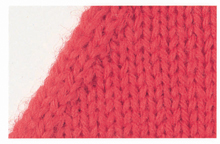
Knitting (or purling) two stitches together is the easiest technique and one that every beginner must learn. This basic decrease slants to the right on the knit side of the work. It is abbreviated k2tog (or p2tog).
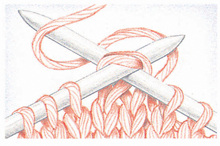
Insert the right needle from front to back (knitwise) into the next two stitches on the left needle. Wrap the yarn around the right needle (as when knitting) and pull it through. You have decreased one stitch.
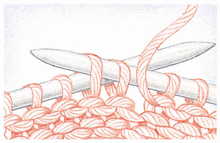
Insert the right needle from front to back (purlwise) into the next two stitches on the left needle. Wrap the yarn around the right needle (as when purling) and pull it through. You have decreased one stitch.
single left-slanting decrease  SKP
SKP
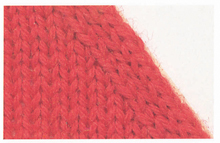
This decrease slants the stitches to the left on the knit side of the work. It is abbreviated as SKP or sl 1, k1, psso (slip one stitch, knit one stitch, pass slip stitch over knit stitch).
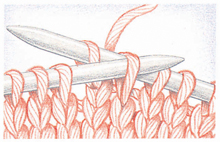
1. Slip one stitch knitwise, then knit the next stitch. Insert the left needle into the slipped stitch as shown.
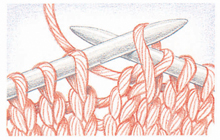
2. Pass the slipped stitch over the knit stitch and off the right needle.
